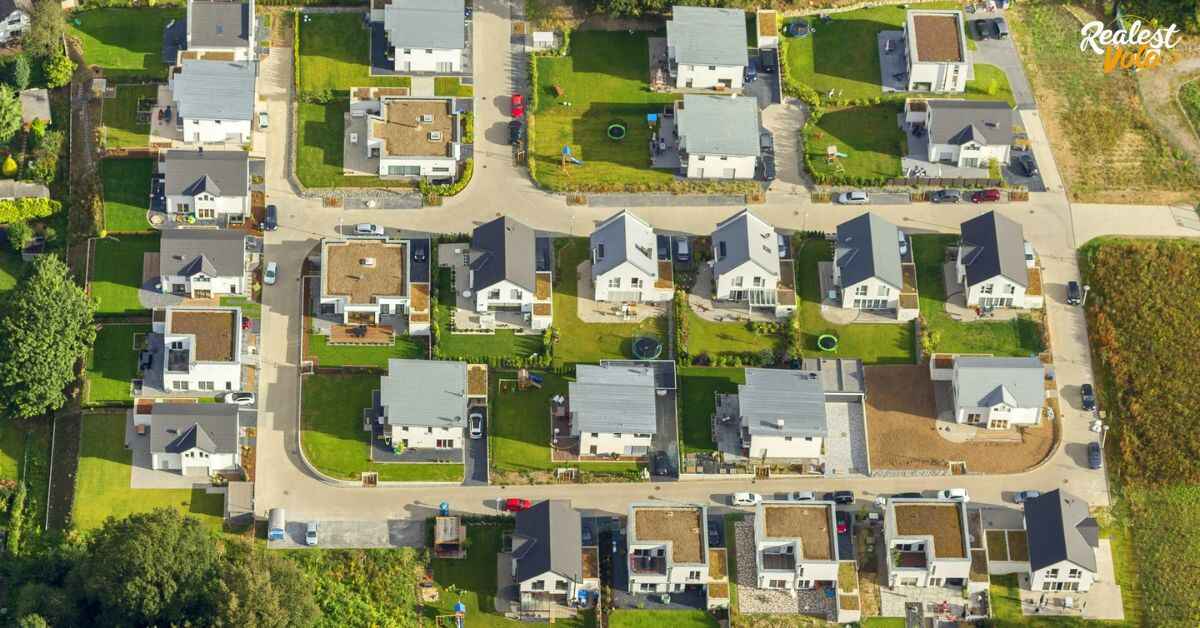In the dynamic world of real estate, the concept of plottage plays a crucial role in maximizing land value and unlocking development potential. Plottage refers to the incremental increase in value that occurs when adjacent parcels of land are combined, creating a larger, more versatile site for development or utilization.
This strategic consolidation of properties is a powerful tool in the hands of developers, investors, and urban planners, enabling them to capitalize on opportunities that would otherwise be unattainable with individual, smaller plots.
Defining Plottage in Real Estate
Plottage is a term that encapsulates the idea of enhancing the value and usability of land by combining multiple adjacent parcels into a single, larger plot. This consolidation often results in a property that is worth more than the sum of its individual parts, as the increased size and unified ownership open up new possibilities for development, utilization, and optimization.
The concept of plottage is closely tied to the concept of highest and best use, which is a fundamental principle in real estate valuation. When separate parcels are combined, the resulting larger site may be better suited for a different, more valuable use than the individual parcels were originally intended for. This shift in potential use can significantly increase the property’s market value and development prospects.
Examples of Plottage
Combining adjacent lots
A common example of plottage is when a homeowner acquires the neighboring lot, effectively doubling their property size. This allows for expansion possibilities, such as constructing a larger residence, adding amenities like a pool or tennis court, or simply enjoying more outdoor space. In densely populated urban areas, where land is scarce, the ability to create a larger residential plot through plottage can significantly enhance property values.
Assembling land for development
Developers often leverage plottage by strategically acquiring multiple contiguous parcels to create a larger, more versatile site for residential, commercial, or mixed-use projects. This process, known as land assemblage, enables developers to maximize the development potential of the consolidated property. By combining adjacent parcels, they can overcome spatial constraints, optimize site layout, and create projects that align with market demands and zoning regulations.
Mechanisms and Factors Driving Plottage Value
Increased Usability and Development Potential
One of the primary drivers behind the value of plottage is the increased usability and development potential that comes with a larger, consolidated site. Smaller individual parcels may be subject to zoning restrictions, accessibility limitations, or physical constraints that restrict their potential uses. However, when these parcels are combined, the resulting larger plot may open up new possibilities for development, allowing for projects that would otherwise be infeasible on smaller, fragmented sites.
For example, a single residential lot may only accommodate a single-family home, but when combined with adjacent lots, the consolidated site could potentially support the construction of a multi-unit residential complex, a mixed-use development, or even a commercial project, depending on zoning regulations and market demand.
Market Conditions and Best Use
The value of plottage is also heavily influenced by market conditions and the concept of “highest and best use.” In areas with high demand for certain types of development, such as residential housing or commercial spaces, the ability to assemble larger sites through plottage can be a significant advantage.
Developers and investors can capitalize on these market opportunities by creating projects that align with the highest and best use of the consolidated land, potentially generating higher returns and meeting the needs of the local market.
Urban Areas and Land Scarcity
In densely populated urban areas where land is scarce and development opportunities are limited, plottage can be particularly valuable. As cities continue to grow and expand, the demand for larger, consolidated sites often outpaces the availability of undeveloped land.
In these situations, the ability to assemble multiple parcels through plottage can unlock significant value and create opportunities for projects that would otherwise be impossible on individual, smaller plots.
Private Equity and Real Estate Investment
The concept of plottage has also gained traction in the realm of private equity and real estate investment. Savvy investors and investment firms recognize the potential value creation opportunities associated with strategically assembling and consolidating land parcels.
By acquiring adjacent properties and leveraging plottage, these investors can unlock hidden value, create larger development sites, and potentially generate higher returns on their investments.
Plottage vs Assemblage
While often used interchangeably, it’s important to differentiate between the terms “plottage” and “assemblage” in the context of real estate. Assemblage refers to the process of acquiring and combining multiple parcels of land, regardless of their adjacency or contiguity. Plottage, on the other hand, specifically refers to the incremental increase in value that results from combining adjacent parcels into a larger, unified site.
In other words, assemblage is the act of land consolidation, while plottage is the value enhancement that stems from that consolidation, particularly when the assembled parcels are adjacent and can be combined into a more usable and valuable site.
Evaluating the Impact of Plottage
The impact of plottage can be observed across various real estate sectors, including residential, commercial, and urban development initiatives.
Let’s explore some examples:
Residential Development
In the residential sector, plottage can facilitate the development of larger housing projects, such as:
- Apartment buildings
- Condominium complexes
- Planned communities
- Retirement villages
These projects often require substantial land areas and benefit from the increased versatility and design options that plottage provides. By consolidating adjacent parcels, developers can create residential complexes with diverse housing options, ample amenities, and well-planned community spaces, catering to the evolving needs and preferences of homebuyers and residents.
Commercial Ventures
- Retail Spaces and Shopping Centers: By combining multiple commercial lots, developers can create larger sites suitable for constructing shopping malls, big-box retail stores, or lifestyle centers. This leverages plottage to meet the demand for larger-scale retail and entertainment destinations, often in high-traffic areas.
- Office Complexes and Business Parks: Through plottage, developers can assemble land to build expansive office complexes, corporate headquarters, or business parks. These consolidated sites not only accommodate larger structures but also provide ample space for amenities like parking, landscaping, and recreational facilities, enhancing the overall appeal for businesses and their employees.
- Industrial and Logistics Centers: The consolidation of industrial parcels through plottage can enable the development of large-scale distribution centers, warehouses, and logistics facilities. These projects often require extensive land areas and strategic locations near transportation hubs, making plottage a valuable tool for meeting the demand for modern industrial and logistics spaces.
Eminent Domain and Urban Renewal
In some cases, local governments may employ eminent domain laws to acquire private properties for public use or urban renewal projects. While controversial, this process can involve the strategic assemblage of multiple parcels through compulsory purchases or land swaps, with the goal of creating larger, consolidated sites for development projects that benefit the community. Examples include the construction of infrastructure, public spaces, or revitalization initiatives in blighted areas.
It’s important to note that eminent domain proceedings are subject to strict legal requirements, including the justification of public use and the provision of fair market value compensation to property owners.
Benefits of Plottage
The concept of plottage offers several significant benefits to real estate developers, investors, and communities alike:
Increased property value
By consolidating adjacent parcels into a larger, more versatile site, the resulting property often experiences a substantial increase in value. This value increment, known as the “plottage increment,” can be significant, making plottage a lucrative strategy for value creation and maximizing returns on real estate investments.
Ability to develop larger projects
The ability to assemble larger sites through plottage opens up opportunities for more ambitious and complex development projects. These can range from large-scale residential communities and mixed-use developments to expansive commercial and industrial facilities. Without the benefits of plottage, many of these projects would be unfeasible or significantly constrained.
Frequently Asked Question
What Is Plottage In Real Estate?
Plottage is the increased value from combining adjacent land parcels. It creates a larger, more usable plot with greater development potential.
How Does Plottage Increase Property Value?
It enables pursuing the highest and best use of the land. The “plottage increment” quantifies the substantial value uplift.
Why Is Plottage Particularly Valuable In Urban Areas?
Urban areas often have scarce land availability. Plottage allows overcoming spatial constraints for larger developments.
What Is The Difference Between Plottage And Assemblage?
Plottage refers to the value increment from parcel consolidation. Assemblage is the process of acquiring and consolidating properties.
How Do Private Equity Firms And Real Estate Investors Utilize Plottage?
They employ plottage strategies for acquisition and development plans. It maximizes returns, economies of scale, and enables ambitious projects.
Conclusion
In the ever-evolving landscape of real estate, plottage stands as a powerful tool for unlocking land value, fostering development opportunities, and driving investment returns. By strategically consolidating adjacent parcels, developers, investors, and urban planners can create larger, more versatile sites that align with market demands and maximize the potential of the land.
Whether it’s enabling the construction of residential complexes, commercial centers, or revitalizing urban areas through strategic assemblage, plottage offers a pathway to enhance property values, optimize land use, and meet the evolving needs of communities.
As cities continue to grow and land becomes increasingly scarce, the importance of plottage is likely to rise, making it an essential consideration for those seeking to navigate the complexities of real estate development and investment successfully.














